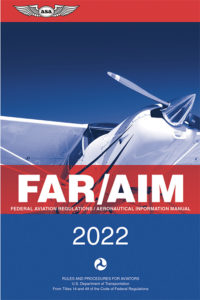1.From the following list, select the certificates and documents that FARs require you to carry aboard an aircraft during flight.
a. Operating limitations
b. Registration certificate
c. Return to service endorsement
d. Airworthiness certificate
e. Aircraft maintenance records
f. Restricted radiotelephone operator permit
g. Record of next required maintenance
2. Regulations require that, prior to each flight under VFR, the pilot in command must:
a. Preflight the airplane
b. Check for any known traffic delays
c. Become familiar with all available information concerning that flight
d. Calculate the weight and balance to determine if the CG is within limits
3. If the RVR equipment is inoperative for an IAP that requires a visibility of 2,400 RVR, how should the pilot expect the visibility requirement to be reported in lieu of the published RVR?
a. As a slant range visibility of 2,400 feet
b. As an RVR of 2,400 feet
c. As a ground visibility of 1/2 SM
4. Maintenance records show the last transponder inspection was performed on September 1, 2022. The next inspection will be due no later than:
a. September 30, 2023
b. September 1, 2024
c. September 30, 2024
5. An aircraft accident is an occurrence associated with the operation of an aircraft for the purpose of flight which results in:
a. Serious injury to any person or substantial damage to the aircraft
b. Injury to any person or property, regardless of the extent involved
c. Injury to any person or damage to the aircraft in excess of $300
d. An injury to any person which requires hospitalization or damage to the aircraft which would require repairs
6. When is an IFR clearance required during VFR weather conditions?
a. When operating in the Class E airspace
b. When operating in a Class A airspace
c. When operating in airspace above 14,500 feet
d. When operating in Class B airspace
Answers: 1. a, b and d; 2. c; 3. c; 4. c; 5. a; 6. b




